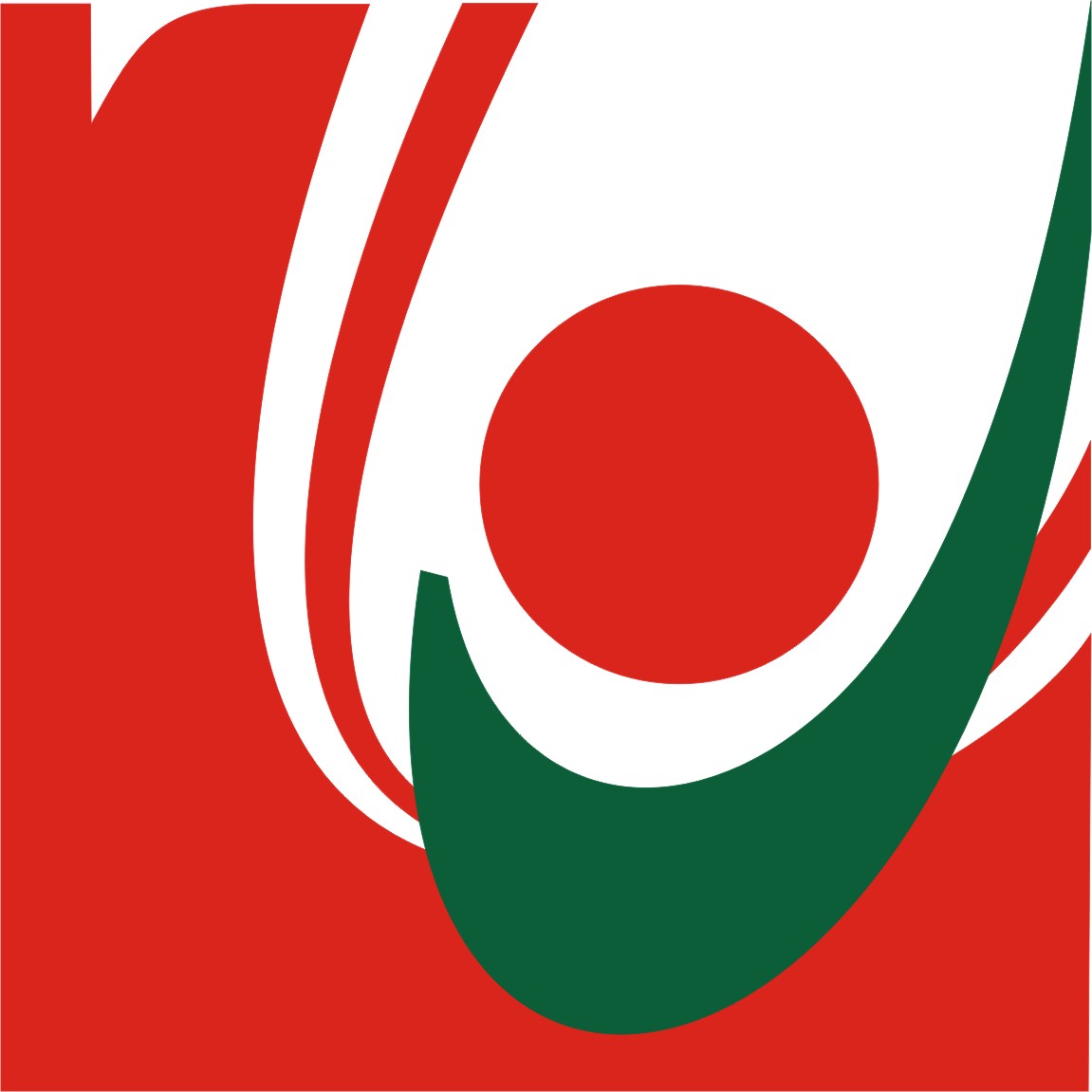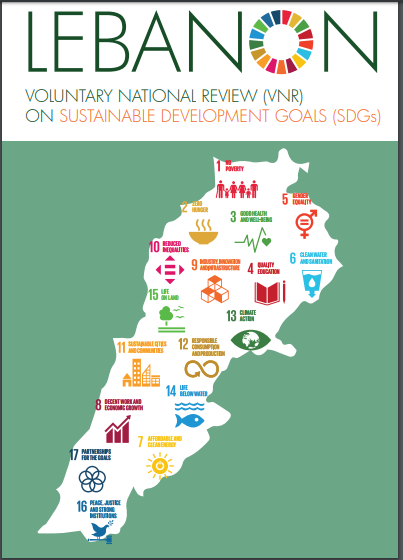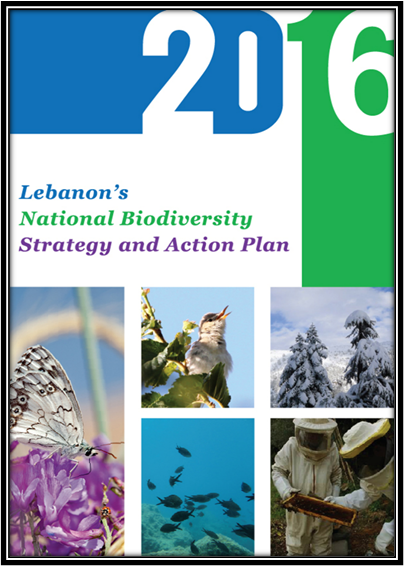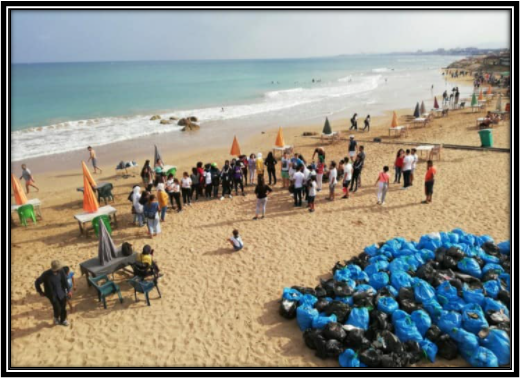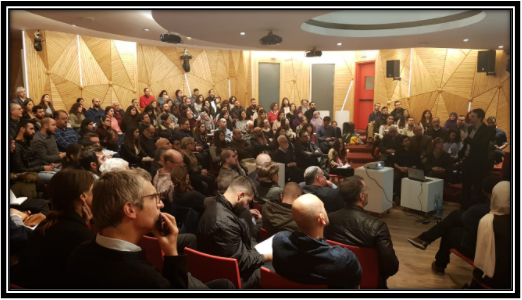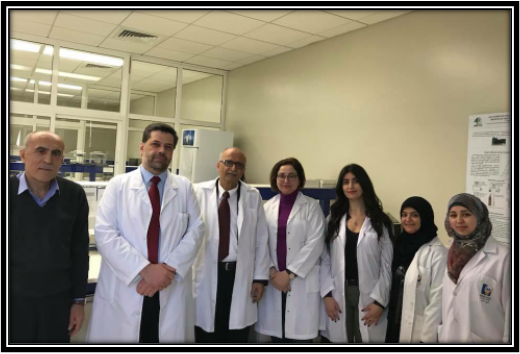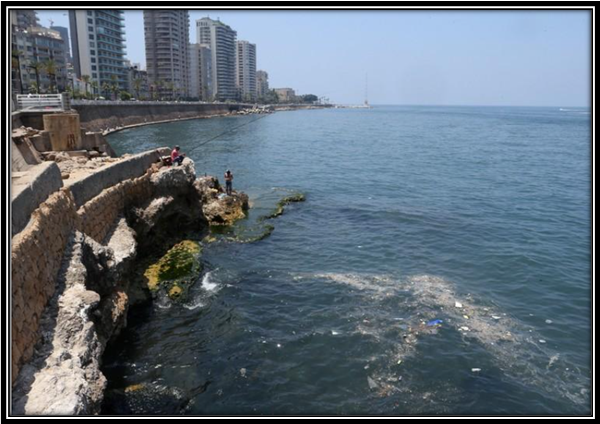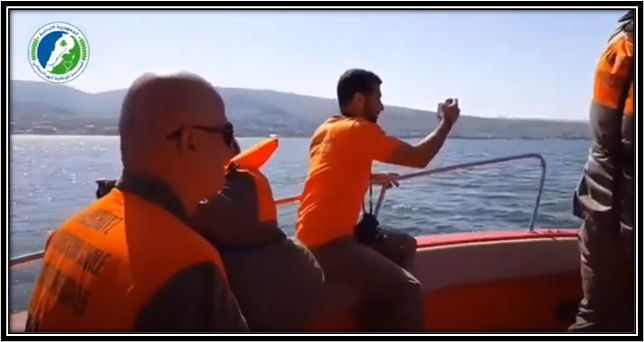SDG14: LIFE BELOW WATER
The Sustainable Development Goals (2015-2030), also known by its acronym SDGs, are an initiative promoted by the United Nations to give continuity to the development agenda after the Millennium Development Goals (MDGs). There are 17 objectives and 169 targets proposed as a continuation of the MDGs, including new areas such as climate change, economic inequality, innovation, sustainable consumption and peace, and justice, among other priorities. After a negotiation process on the SDGs that involved 193 member states of the UN, on September 25, 2015, the 193 world leaders approved at a summit held in New York in a high-level plenary meeting of the General Assembly, an Agenda entitled “Transform our world: the 2030 Agenda for Sustainable Development ", which entered into force on January 1, 2016.
The 17th goal of the Sustainable Development Goals encourages the creation of favorable conditions for a sustainable future through joint action by countries and local communities. In other words, SDG 17 represents the conclusion of global and local partnerships essential to achieving development, building capacities, enhancing trade exchange and mobilizing and investing financial and technological resources to improve the lives of individuals.
Any global partnership must rely on internal and external investment and innovative financing, ensuring sustainable levels of debt, building skills and competencies / enhancing access to trade, and allowing countries the freedom to set their own economic policies. The revitalization of any global partnership must also include a wide range of actors in the public and private sectors, civil society, sources of development financing, sharing of resources and knowledge, and addressing the primary issues underlying sustainable development for all.
Under the 2030 Agenda, development priorities and resources must be directed towards increasing the capacity of developing countries to mobilize domestic resources, expand economic infrastructure, improve domestic production capacities and high-quality basic social services, confront the effects of climate change, and encourage rapid economic growth that does not marginalize anyone, as well as the importance of ensuring food security and poverty eradication and encouraging the establishment of peaceful and just societies.
Since the ultimate function is to provide young people with quality education, the Lebanese University has a responsibility to focus on the importance of the SDGs in research and institutional culture, and cooperate with universities or other organizations to prepare conscious leaders in their community.
The Lebanese University works on more than a level to serve the Sustainable Development Goals, especially in the specialized masters’ programs, such as Master in Energy Physics (SDG 7) and Master in Economic & Development Journalism (SDGs 1, 2 & 3). In addition, the agreements concluded with local and international organizations and activities in which university students participate, serve all SDGs.
GOAL 14: Life below Water
Stretching along the Mediterranean Sea from north to south, Lebanon’s marine resources and seashore are of high environmental, economic, political and social value. Lebanon’s shore extends about 230 km along the Mediterranean Sea and is globally acknowledged for its rich biodiversity. The coast includes Lebanon’s largest cities, where around three-quarters of the population live. Lebanon is party to the 1976 Barcelona Convention for the Protection of the Mediterranean Sea Against Pollution and its amendment (Convention for the Protection of the Marine Environment and the Coastal Region in the Mediterranean, Barcelona 1995); the London Convention for the Prevention of Pollution from Ships (1973) and from Oil (1954 and 1994); the Jamaica Convention of the Sea (1982); the Law of the Sea (Montego Bay, 1982); the 2008 Protocol on Integrated Coastal Zone Management in the Mediterranean, which draws on the Barcelona Convention; and the 2002 Prevention and Emergency Protocol (pollution from ships and emergency situations). A draft national integrated coastal zone management law has been prepared, which could, along with the environment protection law, determine new principles for the protection of the coast and marine environment.
In 2018 the Cabinet endorsed the National Biodiversity Action Plan (prepared in 2016) that includes the protection of coastal and marine biodiversity. Lebanon has two coastal protected areas: The Palm Islands Nature Reserve and the Tyr Coast Nature Reserve.
The Ministry of Environment’s Marine Protected Areas Strategy (prepared in 2012 in collaboration with other stakeholders) aims to create a network of protected areas consisting of nine marine or coastal sites, five estuary sites, and between one and four deep sea sites.
The CNRS-L’s National Center for Marine Sciences is running a national coastal monitoring programme of 25 sites to better manage the Lebanese coastal zone and help create marine protected areas. This programme includes evaluating the environmental status of the Lebanese coastal water, studying the impact of diverse anthropogenic pollution sources on the seawater quality, and studying the accumulation of organic, chemical and micro plastics pollutants in water, sediment and biota.
The Lebanese University is willing to develop this axis by cooperating with CNRS-L in this field as well as other specialized international and local institutions, to develop research and put standards, on the one hand and in the other hand by creating a faculty for maritime Sciences, but it needs adequate decree and legal procedures from Lebanese authorities and government.
The Department of the Master in Landscape and Landscape Planning at the Faculty of Fine Arts and Architecture / Lebanese University hosted twenty students from the Faculty of Engineering at Ain Shams University / Cairo, from July 23 to 31, 2023 and within the course (APPEL - Atelier Pluridisciplinaire du Paysage à l'Echelle Locale).
The students of the two faculties shared ideas and proposals related to the Branding Saida project, the focus of the cooperation agreement between the Lebanese University and the Municipality of Saida.
The project presents a vision to reconnect the city of Sidon with the sea and provides a practical landscape approach strategy to reposition the city on the tourist map by highlighting its archaeological and environmental landmarks and its ability to attract local and foreign tourism.
On July 27, 2023, students of the two universities gave a visual presentation about the project at the Sidon Municipality Building in the presence of the Dean of the Faculty of Fine Arts and Architecture, Dr. Hisham Zein El-Din, Head of the Specialized Master Department in Landscape Planning and Natural Sites, Dr. Nina Zeidan, Head of the Department of Urban Planning, Dr. Raed Jouni, professors from the department: Dr. Elie Khattar, Dr. Samar Makki Haidar, Dr. Salah El-Din Sadiq, Engineer Wissam Melhem, in addition to members of the Municipality of Sidon (Eng. Mustafa Hegazy, Muhammad Al-Baba and Haifa). Secretary).
The Egyptian student delegation was accompanied by Dr. Marwa Khalifa, Head of the Environmental Architecture and Urbanism Program at the Faculty of Engineering at Ain Shams University, and Dr. Noha Gamal, International Mobility Coordinator at the University's International Cooperation Office.
It is noteworthy that the Egyptian student and administrative delegation toured several Lebanese archaeological and tourist areas, and concluded its visit to Lebanon with a dinner held in his honor at Al-Sayyad Restaurant / Beirut, where certificates of participation were distributed to students and professors by Dr. Zein El-Din and Dr. Zeidan.
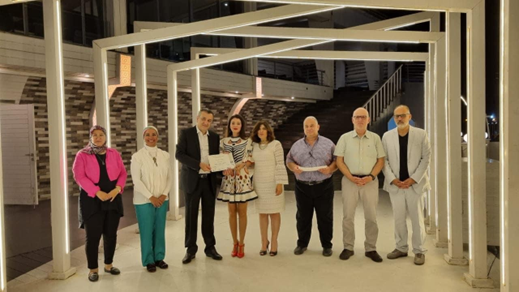
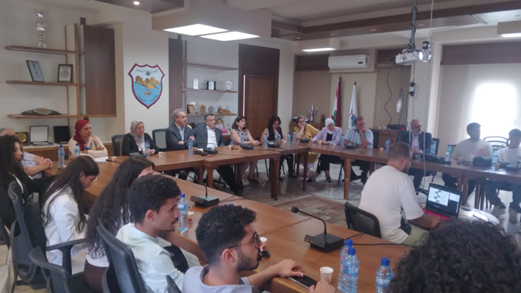
The Litani River National Authority, with the support of teams from the Lebanese University, the Lebanese Army, the Lebanese Red Cross, the Big Blue Campaign and volunteers from private universities, municipalities and environmental, civil and civil associations, has completed the cleaning of the eastern bank of Lake Qaraoun of dead carp fish and continues to work to clean the West Bank of it.
The Director General of the National Authority for the Litani River, Dr. Sami Alawiyeh, pointed out that the Lebanese University represents a strong partner in this crisis on two levels: the first field and the second scientific, speaking about the role it played in mobilizing to gather volunteers and coordinating with the concerned authorities and associations to remove dead fish, as well as cooperation in the scientific research aspect and developing plans to dispose of dead fish and bury them in accordance with health and environmental conditions.
In more than one direction, the Lebanese University teams within the Crisis Intervention Unit (LU-Task Force) worked to combat the Qaraoun crisis under the direct supervision of the President of the University, Professor Fouad Ayoub.
With the first reports of the crisis, the Rapid Response Team (RCRT) headed by Dr. Hassan Salameh, Lebanese University graduate Rasha Thebian, Ms. Patricia Nasr and student Aya Mortada were activated to coordinate, prepare and supervise the fieldwork.
The team of the Faculty of Agriculture, consisting of the President of the Lebanese Food Safety Authority, Dr. Elie Awad, Prof. Rabih Ramouz and Dr. Salem Hayyar, accompanied the Litani Department teams in taking samples, determining their quality and locations, and transporting them for preservation in the Faculty's Animal Production Laboratory in preparation for transferring them to specialized laboratories in Lebanon and abroad.
Dr. Alawieh assigned Dr. Elie Awad and Dr. Nabil Amasha to follow up on the determination of the results of the sample testing in the Lebanese laboratories and one of the laboratories specialized in fish in France.
For his part, a team from the National Center for the Quality of Medicine, Food, Water and Chemicals (LFDCA) under the supervision of Professor Nazih Bou Chahine and the coordinator of the scientific committee at the center, Professor Pascal Salama, is working on preparing an "epidemiological study" that will include residents around Lake Qaraoun to identify the health effects of the crisis (if any) and present the results to the concerned authorities.
The President of the Union of Beheira Municipalities and the Mayor of Qaraoun, Eng. Yahya Daher, valued the high responsibility of the Lebanese University work teams, and called on them to follow up scientifically on the file by studying the causes of pollution, the results of the examination of samples, and taking samples of water and fish regularly in order to preserve the health and environmental systems in the lake and its surroundings.
In the face of the above, the Lebanese University reaffirms that it will be by the side of the Lebanese in all entitlements, and considers that addressing any crisis cannot be done without an integrated and multi-tasking national alliance in partnership with the concerned authorities at home and abroad, and in this context, the Lebanese University appreciates the efforts made by the Litani Authority, headed by Dr. Alawiyeh, in cooperation and coordination with:
Lebanese army
UNDP
UNICEF
LRC DAMAGE
Operation Big Blue
Fishing in Lebanon
Cedars for care
LRA
Warm
Qaroun municipalities conglomerate
Muslim Scout
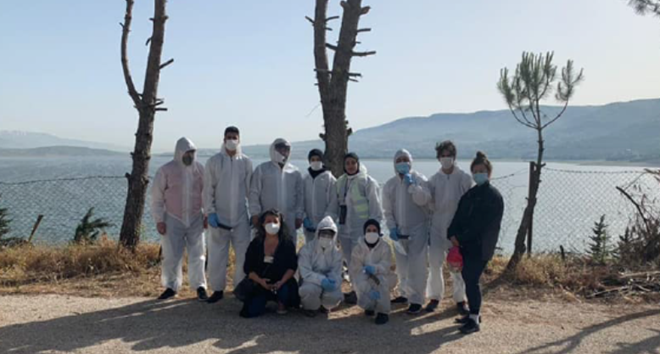
The Lebanese University teams have been participating in the removal of dead fish from Qaraoun Lake and its banks, in cooperation with the Litani River National Authority, the Lebanese Army, the Lebanese Red Cross, and volunteers from private universities, municipalities, and civil and civil associations.
With the first reports of a seasonal virus that caused the accumulation of thousands of dead carpio fish on the shores of the lake connected to the Litani River, the Crisis Intervention Unit at the Lebanese University (LU-Task Force) under the supervision of the President of the University, Prof. Fouad Ayoub, formed the rapid response team to contribute to combating the unprecedented environmental crisis and support the efforts of the Litani and the people to overcome it.
After completing the field survey and assessment of biodiversity in the lake, the Lebanese University formed an emergency team from the National Center for the Quality of Medicine, Food, Water and Chemicals (LFDCA) to support the field teams concerned with food security, fisheries, waste treatment and epidemics, in cooperation with the DRR-Disaster Risk Reduction Department of the Lebanese Red Cross.
In order to prepare for the issuance of a scientific recommendations paper to address the crisis, President Ayoub communicated with a number of concerned parties, and a specialized scientific team was formed with the Universities of Saint Joseph USJ and Balamand, which will work on the following objectives:
Identify the direct and indirect causes of the disaster in cooperation between university laboratories and private laboratories, including the laboratory of the Chamber of Industry in Tripoli
Dead fish must be removed
Develop a context for the scientific treatment of dead fish that is not harmful to the environment and groundwater and mainly preserves the health safety of the people of the towns surrounding the lake
Monitor fluctuations in the oxygen level in the water periodically during the day and night to maintain the lake's ecosystem
Work to radically address the sources of pollution in the Litani River and the lake
Conducting an epidemiological study in the community around the lake
Work on the treatment of irrigation water from the lake through channel 900
The Lebanese University thanks His Excellency the Mayor of West Bekaa, Mr. Wissam Resaba, the President of the Qaraoun Municipalities Association, and the Mayor of Qaraoun, Eng. Yahya Daher, for providing the necessary support to the university's volunteer teams, and appreciates the role and cooperation of the (cedars for care) association, the operation big blue campaign (OBBA) and the (Fishing in Lebanon) association to accomplish this task.
The Lebanese University also thanks the President of Saint Joseph University, Father Professor Salim Daccache, and the President of the University of Balamand, Prof. Elie Warraq, for their quick response to President Ayoub's call to form field and scientific response teams to confront the crisis.
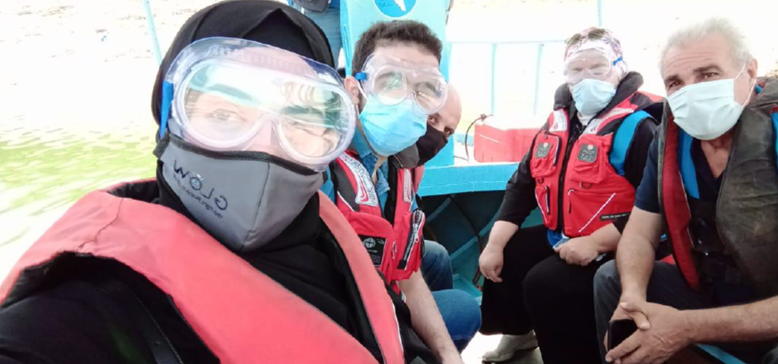
Lebanon’s National Biodiversity and Action Plan (NBSAP) 2016-2030 addresses Lebanon’s obligations under Article 6a of the Convention on Biological Diversity (CBD) and is an update of the country’s first NBSAP issued in 1998. The revised NBSAP was aligned with the new CBD strategic goals and integrated the 2020 Aichi Biodiversity Targets while taking into consideration both global and local needs and aspirations, as well as reflecting Lebanon’s specific realm and the current existing professional capacities and awareness levels.
One of the main objectives of the NBSAP is to mainstream biodiversity into sectoral and cross-sectoral strategies, plans and programmes. The NBSAP has been prepared through an interactive process of stakeholder consultation and approval translated into five workshops and several steering committee meetings.
cooperation with the “Student & Youth Association”, students of the "UNESCO Club" in the Lebanese University - Faculty of Letters & Human Sciences (Branch 5) organized a campaign on 28 June 2020, to clean the Ghazieh beach. The campaign included awareness campaigns and the distribution of leaflets about the protection of the marine environment.
The campaign was launched in the presence of the Faculty Director, Dr. Nassif Nehme, Student & Youth Association President, Bilal Ghaddar, Mayor of Ghazieh Municipality, Ahmed Khalifa, community and educational personalities, and a group of school students.
In his speech, Dr. Nehme stressed the importance of cooperation and partnership between university students, NGOs and society to make environmental, cultural and scientific activities successful.
In cooperation with the French Institute of the Near East (IFPO), the Lebanese University - Faculty of Fine Arts & Architecture (Department of Urbanism) organized the first seminar in the series of the 2020 meetings on "Ecology, Politics and Urbanism", entitled “Beirut River: What is the river in the city? Sanitation, oasis or link between the city and the interior?”
The seminar held on 16 January 2020 in Beirut - Sodeco, was attended by Stéphane Gotti (University of Montpellier), Adib Dada (consultant), Claudine Abdel-Massih (Arab Center for Architecture) and Ghassan Moukheiber (legal and former MP in the Lebanese Parliament). The seminar was also attended by a group of researchers, university professors and students in Lebanon, and representatives of the civil society and NGOs.
The Head of the Department of Urbanism, Dr. Salahuddin Sadek representing the Faculty Dean, Dr. Mohamed Hosni El-Hajj, launched the seminar, and Dr. Michel Mouton, Director of the French Institute of the Near East, spoke about the importance of cooperation with the Lebanese University.
Dr. Jihad Farah, from the Department of Urbanism at the Faculty of Fine Arts & Architecture, explained the problems to be addressed in the upcoming meetings, and Dr. Guillaume de Vaulx of the IFPO talked about a competition to be launched this year in conjunction with the seminar schedule.
The National Center for the Quality of Medicine, Food, Water and Chemicals at the Lebanese University released the results of analyzing water samples taken from a number of households in the central and western Beqaa.
The analysis showed that bacterial contamination affected surface and ground water and the distribution networks, and therefore the drinking water that reached households in those areas is not suitable for drinking. According to the Center, the results of the bacteriological analysis of drinking and usage water showed that a well near Chamsine Spring fed the town of Bar Elias, and that the bacteria therein exceeded the maximum permissible limit for drinking water due to its contamination with wastewater.
The analysis of samples of Ain ez Zarqa Spring in Sohmor, which fed some of the western Beqaa and Rachaiya towns, showed the presence of bacterial contamination attributed to the problem of distribution networks due to the exit of clean, potable water from the treatment plant and its contamination before reaching the subscribers.
The Center, managed by Dr. Nazih Bou Chahine, signed in 2017 an agreement with the Ministry of Public Health, and became a national reference for the quality standard in analysis with the efforts of a team composed of a number of doctors and technologists, including Dr. Mohamed Qoubar (Head of the Department Bacteriological Analysis), Dr. Fatina Suleiman (Coordinator of Food Committee), Dr. Nabil Amasha (Representative of the Center with the Litani Authority), Inaam Nasrallah (Quality Officer at the Center), Fatima Zaiour (Technical Officer) and Mariam Zeina (Technical Technician).
A sign warning against swimming because of pollution seems to have had little effect on this beach near the city of Tripoli, one of a declining number of public beaches in Lebanon.
Poorer Lebanese have few good choices to enjoy the beach in the sweltering Middle Eastern summer. Drive down the coastal highway and the signs point to one expensive resort after another, with little space left for public access.
“If people had money they wouldn’t come here... If someone has four or five children, where could he take them? If his salary is $500 or $600 a month, where could he take them?” said 63-year-old Adnan Daouk at the only public beach in the capital Beirut.
Pollution spills into the sea along stretches of Lebanon’s often dramatic, hilly coastline. In places, raw sewage sometimes washes into the water, according to a recent report on public beaches by the state-run National Centre for Marine Sciences.
Lebanon also has a rubbish disposal problem. Landfill sites, some by the seashore, are overflowing and in recent years, winter storms have covered nearby beaches with plastic.
The Museum of Natural Sciences at the Lebanese University exists since 1979 and is a scientific wing that serves as a research tool for students and researchers, and a cultural portal for the stakeholders.
The museum includes a collection of samples of insects, reptiles and fossils, which the war that Lebanon had gone through had destroyed some of its contents and the remains were transferred to the Faculty of Sciences in Fanar in 1984. Before its official opening in May 2004, the museum was an insectology laboratory and part of a research project funded by the British Embassy in Beirut, as stated by Dr. Najla Zaidan, one of the Museum founders.
Dr. Zaidan said the museum's assets managed by the Department of Life Sciences and Earth at the Faculty of Sciences, include fossils and all that is related to Earth science from insects, reptiles, amphibians and stone tools used by humans two million years ago and the oldest in the Middle East. She also noted to the importance of documentary annotations alongside the exhibits (lists of names, sources and dates).
The Lebanese University, in cooperation with the Ministry of Culture, aims to put the Museum of Natural Sciences - Fanar and George Tohme's herbarium - on the list of national museums, to be the main contributor to the dissemination of environmental and scientific culture about Lebanon.
